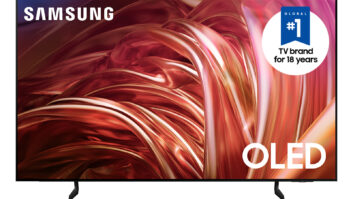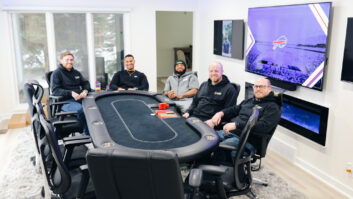Why Net Profit, Not Gross Sales, is Our Measure of Success

Dave Chace ([email protected]) is president of Training Allies, a CE-focused training firm in Philadelphia.
If you run a business, your life revolves around numbers. And when asked what number they consider to be the most important, many electronic systems contractors will say “gross sales,” with the assumption being that if their sales volume is high enough, success and survival is assured. This is not necessarily true.
In reality, the number that matters most at the end of the day is net profit, or how much money is left over after all the bills are paid. If you’re not focused on this now, you’d better start.
Volume without profit is like eating soup with a fork. You stay real busy, but don’t get very full. Many ESCs work furiously, believing that the only way to survive is by selling lots more stuff to lots more people. But, meanwhile, they aren’t paying close enough attention to the actual cost of these sales, or their bottom line profit margin. They’re working hard, but not necessarily working smart. In this market, the smartest players are those who can learn how to increase their profit margins–and make more money–despite reduced sales.

Stone-Glidden, a systems integration firm based in King of Prussia, PA, had its most profitable year on record in 2010, despite sales volume that was more than 30 percent below their highest grossing year (2007). The key reason? They made the decision to stop selling video displays. Pictured here is owner Tom Stone teaching a CEDIA CEU class to 35 interior designers at his company’s showroom.
Addition by Subtraction
Sometimes the road to higher profit isn’t paved with what you sell, but rather what you don’t sell. Stone-Glidden, a systems integration firm based in King of Prussia, PA, had its most profitable year on record in 2010, despite sales volume that was more than 30 percent below their highest grossing year (2007). The key reason? They made the decision to stop selling video displays. “It was the smartest move we ever made,” said owner Tom Stone. “I wish we’d done it years ago.”
Stone realized that the time and expense required to spec the TV, find and order it (including paying freight at times), open it and check for damage upon arrival, then store it, deliver it, and unpack it at the customer’s home was obliterating the already razor-thin profit margin of many displays. “And the install had better happen soon,” Stone said, “otherwise in the meantime the customer will find the same TV advertised for even less money and expect you to match the new lower price.”
Now Stone’s sales team tells the customer to purchase the TV from wherever they like, at the best price they can find (they suggest Amazon.com). It’s a win-win situation. The customer gets the set they want at a bargain price, and when the installation crew arrives, the TV is already on hand waiting for them. Meanwhile, Stone-Glidden still sells them all the necessary (and profitable) addons like cabling, power kits, brackets, etc. Many of the customers use the money they save on the TV to pay Stone-Glidden for professional calibration, further increasing the profit margin of the sale.
If the customer wants Stone-Glidden to provide the TV, then they will do so after making it clear that they charge MAP pricing. “Many customers are more than happy to pay full price,” Stone noted, “and in those cases I can still make good margin on the set.”
Baby Steps
Often the simplest way to increase profit is to do so in little nibbles, not big bites. In addition to mining for new or higher end customers, carefully consider what you’re selling to existing ones. In many cases you’ll uncover several opportunities to wring more profit out of the deals you’ve already landed. And a little more profit per sale adds up quickly over the course of a year. For instance, think about the AV receiver that you typically spec for a basic home theater and ask yourself, “If I really tried, could I sell the customer just one model higher?” If you’re accustomed to selling the $500 model easily, isn’t it possible the customer would spring for the $700 model if you provided compelling reasons why they should? If so, that’s another $60-$80 profit in your pocket with no additional labor required.
Now consider how many speakers you install over the course of a year, and think about which models you typically include in your proposals. If you normally recommend models at a particular price, consider how many customers would go with upgraded models for just $100 more per pair, if you explained how they provide a richer sound, and told them unequivocally it was worth it. In most cases, this would add only a couple hundred bucks more to the proposal, but for every upgraded pair you sell, you boost your net profit by another $50 or more on average (again, the cost of labor is the same as with the cheaper pair).
At the end of the year, these little nibbles add up to substantial sums. Successfully selling just $400 worth of upgraded speakers per week translates to roughly $10,000 more profit at year’s end. Not bad, considering it doesn’t require you to work any harder, or land any new customers.
While businesses are typically ranked according to volume, it’s profitability that determines real success. So while you’re focusing on keeping the sales pipeline full, be sure that you’re spending adequate time assessing how to squeeze every dollar of profit out of those sales.





